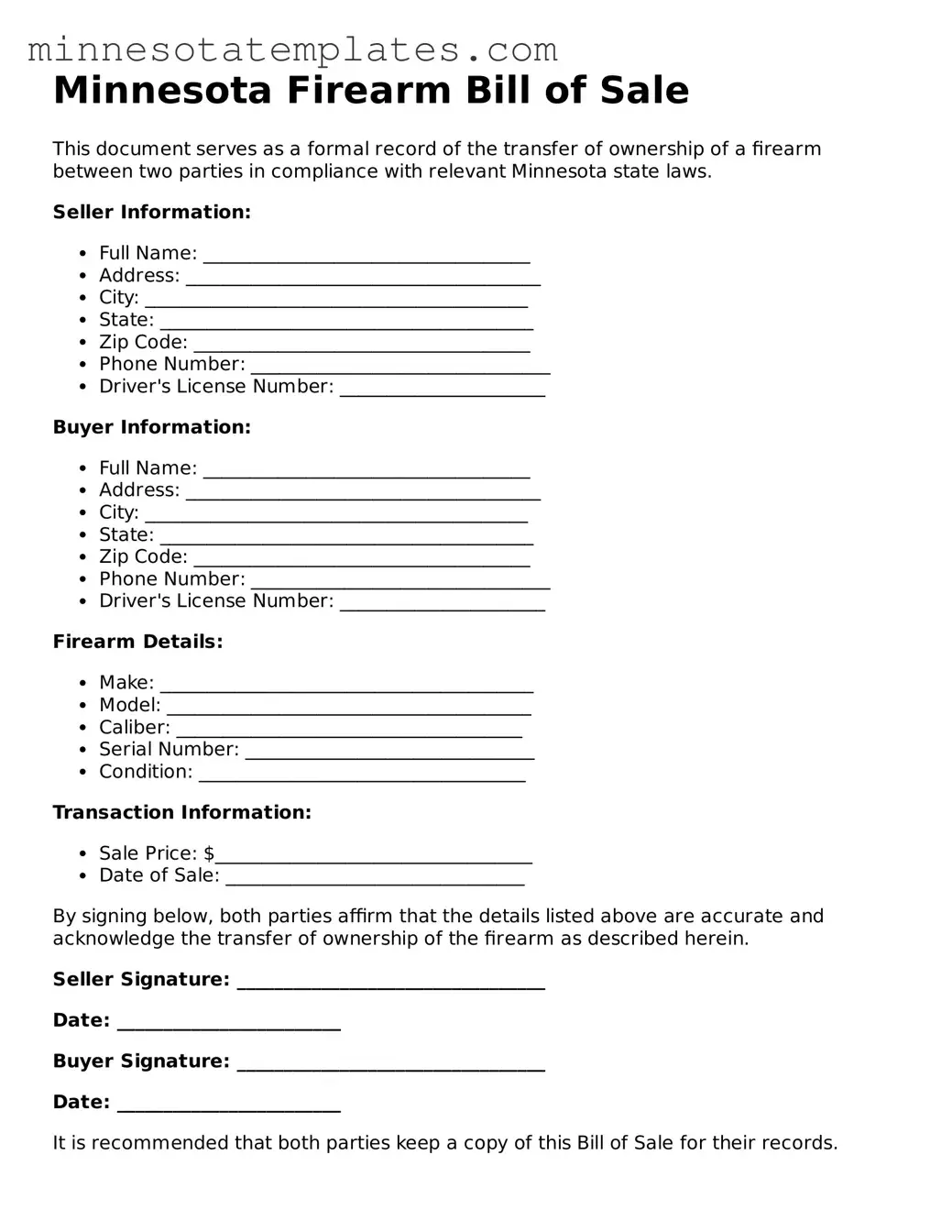Valid Firearm Bill of Sale Form for the State of Minnesota
A Minnesota Firearm Bill of Sale form is a legal document that records the sale and transfer of a firearm between parties. This form serves as proof of ownership and ensures compliance with state regulations. If you're considering buying or selling a firearm in Minnesota, it's essential to have this form completed accurately.
Ready to fill out your Minnesota Firearm Bill of Sale form? Click the button below to get started!
Access Your Form Now
